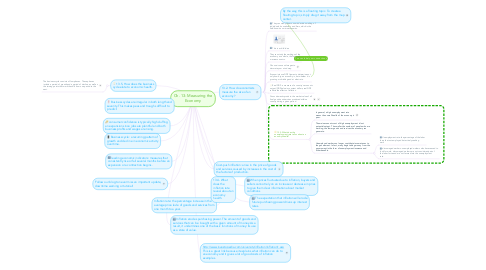
1. Inflation rate: the percentage increase in the average price levle of goods and services from one month to a year.
2. Inflation erodes purchasing power. The amount of goods and services that can be bought with a given amount of money. As a result, it undermines one of the basic functions of money: its use as a store of value.
3. Follow our blog to never miss an important update, downtime warning or tutorial!
4. 13.5- How does the business cycle elate to economic health.
4.1. The business cycle consists of four phases. These phases include a period of growth and a period of decline, as well as the turning points that mark the shift from one period to the next.
5. Business cycles are irregular in both length and severity. This makes peas and troughs difficult to predict.
6. consumer confidence is typically high duffing an expansion since jobs are plentiful and both business profits and wages are rising.
7. Business cycle: a recurring pattern of growth and decline in economic activity over time.
8. leading economic indicators: measures that consistently rise or fall several months before an expansion or a contraction begins.
9. http://www.investopedia.com/university/inflation/inflation1.asp This is a great link because it explains what inflation can do to an economy and it gives a lot of good costs of inflation examples.
10. Cost-push inflation :a rise in the price of goods and services caused by increases in the cost of the factors of production.
11. When prices fluctuate due to inflation, buyers and sellers cannot rely on an increase or decrease in pries to give them clear information about market conditions
12. The expectation that inflation will erode future purchasing power drives up interest rates.
13. By the way, this is a floating topic. To create a floating topic, simply drag it away from the map center.
14. 13.2- How do economists measure the size of an economy?
14.1. They can study the economic decision making of individuals, households, and firms, which is the field known as microeconomics.
14.2. This is a child idea
14.3. They can study the workings of the economy as a whole, the focus of macroeconomics.
14.4. Choose icons and images to decorate your mind map
14.5. Economists use GDP figures to determine not only how big an economy is, but whether it is growing or shrinking and at what rate.
14.6. Real GDP: a measure of a country's economic output (GDP)value in constant dollars; real GDP reflects the effects of inflation.
14.7. Gross domestic product: the market value of all final goods and services produced within a country during a given period.
14.8. 13.3- What does the unemployment rate tell us about an eonomys health?
14.8.1. In general, a high unemployment rate means the overall health of the economy is poor.
14.8.2. The main economic cost of high unemployment is lost potential output. The smaller the number of people who are working, the fewer goods and services the economy can generate.
14.8.3. Unemployed workers no longer contribute income taxes to the government. In fact, many begin taking money from the government in the form of unemployment insurance and other benefits.
14.8.3.1. Unemployment rate: the percentage of the labor force that not employed but actively seeking work
14.8.3.2. discouraged workers: unemployed workers who have ceased to look for work; discouraged workers are not considered part of the labor force and are not favored into the unemployment rate.

